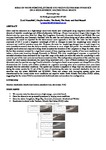Role of wave forcing, storms and nao in outer bar dynamics on a high-energy, macro-tidal beach
| dc.contributor.author | Masselink, Gerd | |
| dc.contributor.author | Austin, M | |
| dc.contributor.author | Scott, Tim | |
| dc.contributor.author | Poate, Tim | |
| dc.contributor.author | Russell, Paul | |
| dc.date.accessioned | 2014-09-02T16:27:09Z | |
| dc.date.available | 2014-09-02T16:27:09Z | |
| dc.date.issued | 2014-08-02 | |
| dc.identifier.issn | 0169-555X | |
| dc.identifier.issn | 1872-695X | |
| dc.identifier.uri | http://hdl.handle.net/10026.1/3093 | |
| dc.description | EPSRC funded. NERC–RNLI partnership grant NE/H004262/1 The full text is under embargo until 02.08.15 NOTICE: this is the author’s version of a work that was accepted for publication in Geomorphology. Changes resulting from the publishing process, such as peer review, editing, corrections, structural formatting, and other quality control mechanisms may not be reflected in this document. Changes may have been made to this work since it was submitted for publication. A definitive version was subsequently published in Geomorphology, [VOL 226, (02.08.14)] DOI 10.1016/j.geomorph.2014.07.025 | |
| dc.description.abstract |
Outer sand bar dynamics on a high-energy macro-tidal beach were investigated using long-term (multi-year) field datasets of intertidal morphology and offshore bathymetry. Utilising a 15-year time-series of Argus video images, five distinct outer bar types were identified: Mega Rip, Longshore, Crescentic, Crescentic Attached and Welded. The most common classification was Crescentic Attached, with the outer bar oscillations being out of phase with the inner bar oscillations, as would be expected for the shore-normal wave approach at this site. The outer bar had a typical amplitude of 0.5-1. m and a longshore wavelength of 600. m. Changes in outer bar morphology were related to measured and modelled nearshore wave data. However, the outer bar morphology changed over a much longer timescale (monthly-to-annual) than the daily-to-weekly variations in wave height and period. An extended duration of energetic wave action was required to bring about an upstate bar transition to the Longshore or Mega Rip state, where the bar then remained arrested for a significant amount of time, requiring several months of low wave conditions to induce a down state transition through Crescentic to Welded. This slow morphological response is explained by extended relaxation times attributed to the large tidal range at the study site where the outer bar morphology is only active for part of the tidal cycle (several hours around low tide). The configuration and position of the outer bar were related: the more upstate (downstate) bar types being associated with a more offshore (onshore) bar position. The detrended outer bar position was significantly related to a forcing term based on wave power and disequilibrium of the dimensionless fall velocity with offshore (onshore) bar migration occurring when wave conditions were more (less) energetic that the antecedent conditions. The upstate end-member (Longshore or Mega Rip) was attained sometime during the winter months for 14 out of the 16. years of monitoring the outer bar remained attached to the low tide shoreline over the winter 2005/2006 and 2010/2011. These two winters, with incomplete upstate cycles, were characterised by the lowest winter wave conditions and negative winter North Atlantic Oscillation (NAO) indices, suggesting that the winter NAO is correlated with both beach state and nearshore bar configuration. © 2014 Elsevier B.V. | |
| dc.format.extent | 76-93 | |
| dc.language | en | |
| dc.language.iso | en | |
| dc.publisher | Elsevier BV | |
| dc.subject | Beaches | |
| dc.subject | Beach state | |
| dc.subject | Beach classification | |
| dc.subject | Nearshore bars | |
| dc.subject | Storminess | |
| dc.subject | NAO | |
| dc.title | Role of wave forcing, storms and nao in outer bar dynamics on a high-energy, macro-tidal beach | |
| dc.type | journal-article | |
| dc.type | Article | |
| plymouth.author-url | https://www.webofscience.com/api/gateway?GWVersion=2&SrcApp=PARTNER_APP&SrcAuth=LinksAMR&KeyUT=WOS:000343351300007&DestLinkType=FullRecord&DestApp=ALL_WOS&UsrCustomerID=11bb513d99f797142bcfeffcc58ea008 | |
| plymouth.volume | 226 | |
| plymouth.publication-status | Published | |
| plymouth.journal | Geomorphology | |
| dc.identifier.doi | 10.1016/j.geomorph.2014.07.025 | |
| plymouth.organisational-group | /Plymouth | |
| plymouth.organisational-group | /Plymouth/Admin Group - REF | |
| plymouth.organisational-group | /Plymouth/Admin Group - REF/REF Admin Group - FoSE | |
| plymouth.organisational-group | /Plymouth/Faculty of Science and Engineering | |
| plymouth.organisational-group | /Plymouth/Faculty of Science and Engineering/School of Biological and Marine Sciences | |
| plymouth.organisational-group | /Plymouth/REF 2021 Researchers by UoA | |
| plymouth.organisational-group | /Plymouth/REF 2021 Researchers by UoA/UoA07 Earth Systems and Environmental Sciences | |
| plymouth.organisational-group | /Plymouth/Research Groups | |
| plymouth.organisational-group | /Plymouth/Research Groups/Marine Institute | |
| plymouth.organisational-group | /Plymouth/Users by role | |
| plymouth.organisational-group | /Plymouth/Users by role/Academics | |
| plymouth.organisational-group | /Plymouth/Users by role/Researchers in ResearchFish submission | |
| dc.identifier.eissn | 1872-695X | |
| dc.rights.embargoperiod | Not known | |
| rioxxterms.funder | Natural Environment Research Council | |
| rioxxterms.identifier.project | Dynamics of Rip currents and Implications for Beach Safety (DRIBS) | |
| rioxxterms.versionofrecord | 10.1016/j.geomorph.2014.07.025 | |
| rioxxterms.licenseref.uri | http://www.rioxx.net/licenses/all-rights-reserved | |
| rioxxterms.type | Journal Article/Review | |
| plymouth.funder | Dynamics of Rip currents and Implications for Beach Safety (DRIBS)::Natural Environment Research Council |


